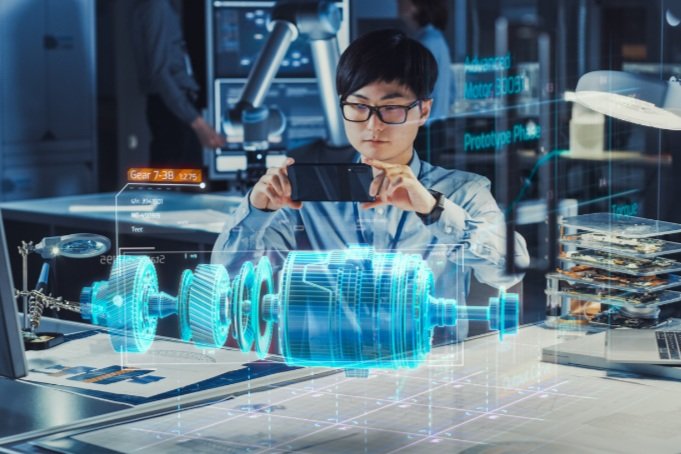Virtual Reality (VR) : The Future of Efficient Factory Worker Training
Technology has consistently played an important role in reshaping processes and improving outcomes in the evolving world of manufacturing. A revolutionary innovation that has emerged recently is the integration of Virtual Reality (VR) into factory worker training. This transformative shift not only revolutionizes how employees acquire skills but also holds huge potential to transform the entire manufacturing industry.
The Limitations of Traditional Training Methods
Conventionally, factory worker training has heavily relied on ways that often fail to provide an engaging learning experience. Traditional classroom style training and instruction manuals can be mundane and lacking the hands-on nature that industrial work requires. Furthermore, on the job training can be both resource heavy and risky for employees as well as for the smooth operation of the factory.
The Potential of Virtual Reality
With the advent of cutting-edge technology like virtual reality, these problems can now be addressed in an innovative way. Through virtual reality (VR), students can enter a simulation of a factory setting that closely resembles reality. Through this immersive experience, they can interact with machines and manage important processes in a safe and regulated virtual environment. VR overcomes the drawbacks of conventional training methods while increasing learning by providing a secure and authentic environment.
Advantages of VR in Factory Worker Training
Increased Engagement: Interactive simulation in VR draws students' attention through dynamic simulations, resulting in an engaging environment that promotes involvement and information retention. As they take on practical challenges without facing consequences in the actual world, trainees grow increasingly invested in the process of learning.
Learning without Risk: In an industry setting, errors can result in mishaps and expensive damages. By enabling trainees to commit mistakes in the virtual world and learn from them without compromising safety or operational effectiveness, VR removes this risk.
Uniform Training: Using VR, each trainee faces the same situations and difficulties, assuring consistency in training. This uniformity supports the continued development of excellent skills across the workforce.
Saving time and money: Implementing traditional training techniques can take up a lot of time and money. VR speeds up the learning curve, helping students to pick up skills faster. Additionally, there is a lower need for physical training tools and supplies.
Adaptable Learning: Virtual reality simulations can be constructed to imitate a wide range of settings, from regular work to situations of emergency. Workers are better prepared for numerous situations they can experience on the manufacturing site because of this adaptability.
With significant results, many businesses have already adopted VR for production worker training. For example, Toyota reduced a significant number of errors by using VR to train workers on the assembly line. In order to increase productivity and efficiency in their manufacturing process, Siemens has also used virtual reality to simulate the assembling of wind turbines.
Challenges and Opportunities for the Future
Despite its promising benefits, incorporating VR into the training of workers in industry doesn't come without any obstacles. For certain businesses, constraints can include initial expenses, technology accessibility, and content production. However, these obstacles are rapidly being solved as VR technology grows more advanced and easier to access.
The use of VR in training industry workers has a promising future. VR simulations are going to grow more realistic and suited to certain production environments as technology improves. The development of skills and worker confidence can be further enhanced by this customized approach.
The significant development in the advancement of industrial learning and VR may be seen as a step towards a tech driven future.In addition to addressing the drawbacks of conventional approaches, virtual reality (VR) also paves the way towards a workforce that is safer and highly competent. We may anticipate seeing a new era in how factory workers are trained and as a result, how manufacturing operations take place as sectors continue to adopt innovative technology.




